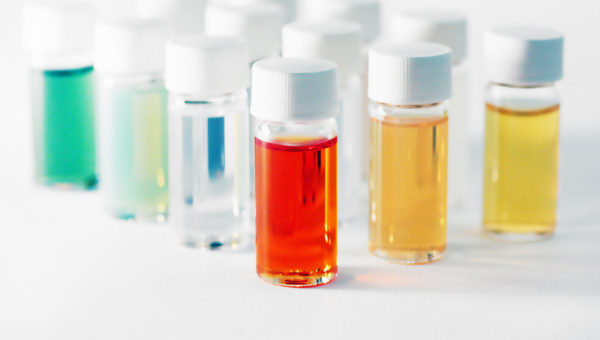QD Inkjet Printing of Color Conversion Layers
Whether they are based on liquid crystal displays (LCDs) or organic light-emitting diodes (OLEDs), all display technologies rely on color conversion layers. A common technique in OLED panels is to pattern the emission device with 4-sub-pixel filters that have low spectral overlaps. This method is known as color-by-white, as a white light-emitting back panel is used for illumination.
Most white OLEDs have specific luminescent characteristics demanding color filters with finely-tuned emission spectra. Saturation and color gamut suffer due to these limitations, yielding relatively cheap OLED devices with modest quantum efficiencies and relatively poor color performance.
Colloidal quantum dots (QDs) have been the subject of intensive research into novel color conversion architectures, as they can be readily deposited onto substrates at high densities with absolute precision. QD inkjet printing, in particular, has been earmarked as a pioneering technique for LCDs and other light-emitting devices – including white OLEDs. Let’s discuss why.

QD Inkjet Printing: The Benefits
With color-by-white, RGB sub-pixels convert white light from the OLED back panel into monochromatic red, blue, and green light. The fourth sub-pixel transmits white light directly. One problem herein is color-by-white still relies on blocking specific wavelengths from a light source to produce emission spectrums with high human-eye sensitivity, thereby resulting in significant energy loss and additional power consumption.
Quantum dot color conversion (QDCC) exploits the inherent photo emissive qualities of QDs to produce fully-saturated colors across the widest possible gamut with quantum efficiencies approaching 99%. As a result, they offer an alternative to conventional RGB color filter materials, producing displays with lower power consumption and vastly improved color gamut, combined with the excellent black levels inherent to OLED technology. The benefits of incorporating QDs into displays is well-documented, but why is QD inkjet printing so promising?
QDCC layers can be deposited via a range of lithographic techniques (spin-coating, roll-to-roll processing, etc.) but QD inkjet printing is among the most efficient methods available. Printer nozzles deposit specific volumes of sample material with little-to-no excess, meaning less wastage and potentially higher manufacturing yields.
Understanding QD Inks
Realising QD inkjet printing demands nanomaterials that are solution processable. This typically requires a ligand exchange process to make QDs compatible with the solvent before they are dispersed at high concentrations. Most QD inks are formulated for high solid loading values to ensure the highest possible color conversion efficiency in thin printed layers.
A potential shortfall of QD inkjet printing is that mandatory concentration levels preclude the use of RoHS restricted materials like cadmium. Yet recent research into cadmium-free QDs has yielded a raft of superior chemistries that can be used to generate high-performance color conversion layers capable of targeting the DCI-P3 color gamut.
QD Inkjet Printing with Avantama
Avantama is one of the world’s leading suppliers of QD formulations for next-generation display manufacturing. We operate on a made-to-order basis, with a broad scope of metal halide perovskites and various solvents at our disposal. This enables us to formulate precision solutions for QD inkjet printing, with excellent market viability and practically unmatched color performance characteristics.
Request a custom nanoparticle dispersion today if you are interested in using QDs for various light-emitting diodes. Or, contact a member of the Avantama team today with any queries.